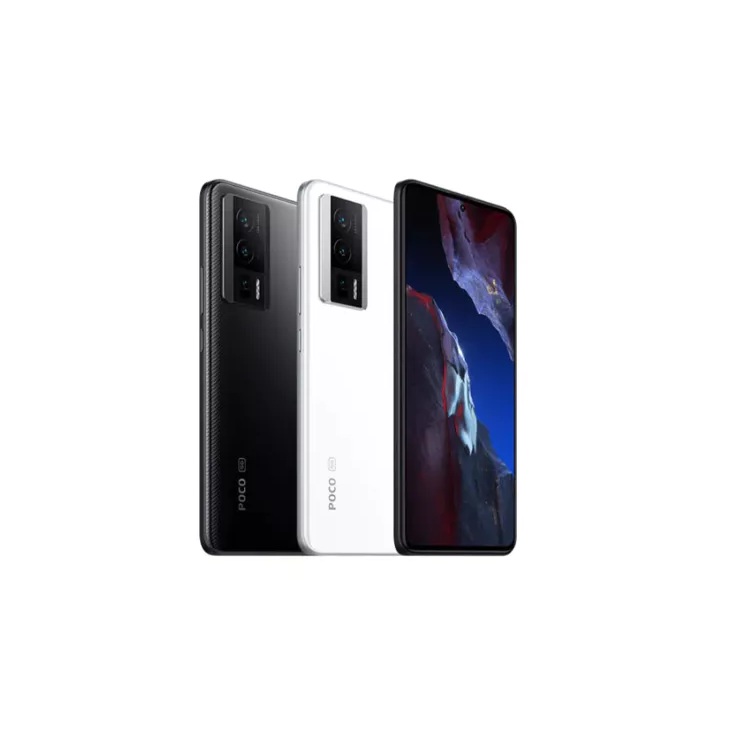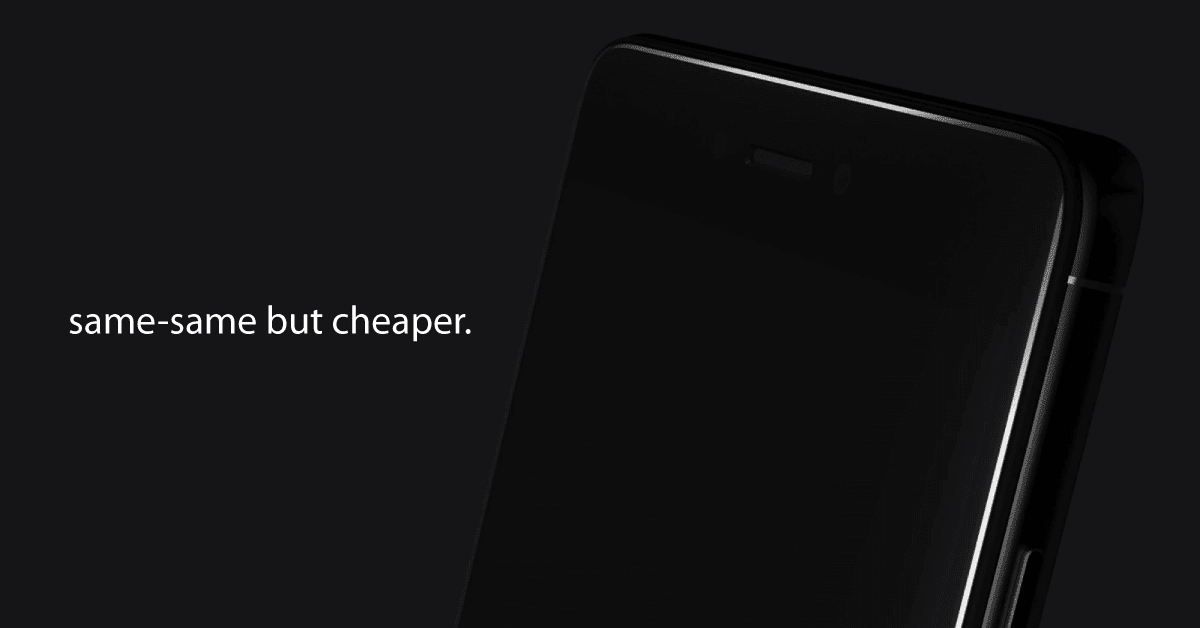The smartphone market, particularly Android, is getting increasingly saturated as time goes by. Popular and emerging brands have aggressively competed with each other to offer their respective range of phones for every budget. But in this article, we will be focusing on budget-friendly or cheapest smartphones that you can get in Malaysia.
Now, don’t be fooled by the word “budget” since such smartphones these days offer the likes of large AMOLED displays, bigger batteries and speedy chipsets. You can even get cheap 5G phones at below RM 1,000. So, if you are planning to buy one, here is our pick of the 9 best budget smartphones between RM 500 and RM 1,500 price range.

Editor
Jennifer's Profile chevron_right

Expert
Umar Naqshbandi chevron_right
Table of Contents
9 Best Budget Smartphones in Malaysia

Why It’s Our Top Pick?
A well-priced smartphone that packs plenty of bells and whistles, covering the likes of a vibrant 120Hz AMOLED display, a large screen, reasonably good cameras, and a durable battery life.
Who is this for?
At below RM 1,000, the Redmi Note 12 is a steal that offers a reasonably good package of 5G capability, a beautiful AMOLED display, decent cameras, and a long-lasting battery life. Not to mention,n this phone has received overall good responses for being a solid all-rounder worth considering.
What to know
Here’s a competitively priced smartphone from Redmi that supports a 5G network. The Note 12 packs a large 6.67-inch AMOLED display with a 120Hz refresh rate for smoother scrolling and mobile gaming. And despite the size of the phone, it only weighs 188g. It features a less conspicuous punch-hole notch on top with reasonably slim bezels from the upper and both sides. The phone is also resistant to dust and splashes, thanks to its IP53 certification.
In terms of cameras, you will get a triple camera setup with a 48MP main and wide sensor, an 8MP ultrawide that covers 120˚, and a 2MP macro shooter. Selfie lovers, in the meantime, can look forward to its 13MP front-facing camera. The phone uses a bottom-firing speaker and there’s a 3.5mm jack to connect your favourite earphones.
The Redmi Note 12 doesn’t skimp on the battery side, offering a big 5,000mAh capacity that sustains around 12-13 hours a day, depending on your usage. It supports fast charging at 33W, where you can get 50% worth of battery power in less than half an hour. Performance-wise, the MIUI 14 offers plenty of customisation options while the Snapdragon 4 Gen 1’s octa-core chipset can fairly handle multitasking and some gaming, namely Call of Duty: Mobile at medium settings.
Xiaomi Redmi Note 12 5G Specifications
- Year Released: 2022
- Chipset + CPU + GPU: Qualcomm SM4375 Snapdragon 4 Gen 1 (6 nm) | Octa-core (2x2.0 GHz Cortex-A78 & 6x1.8 GHz Cortex-A55) | Adreno 619
- Display: 6.67 inches | AMOLED, 120Hz, 1200 nits (peak)
- RAM + Storage: 4/6/8GB + 128GB | 8GB + 256GB
- Camera Setup: Rear – 48MP + 8MP + 2MP | Front – 13MP
- OS: Android 12, MIUI 14 (International)
- Battery: 5000mAh

Who is this for?
If you are a frequent mobile gamer, the Poco F5 Pro 5G is worth considering. It delivers exceptional performance using the flagship-level Snapdragon chipset and looks good on a 6.67” AMOLED display. The 120Hz refresh rate is a bonus, the battery life is robust, and the slimmer bezel design makes gaming all the more immersive. Finally, the Poco F5 made the list among many reviewers as among the top phones that can handle Genshin Impact.
What to know
The gaming-friendly Poco F5 Pro 5G features a large 6.67” AMOLED display with a vibrant Full HD+ resolution that supports 68 billion colours for an immersive gaming and viewing experience. And that is not all, as the display can handle up to a buttery smooth 120Hz refresh rate and thin bezels all around for maximising your screen enjoyment.
With the octa-core Snapdragon 7+ Gen 2 with an optional 12GB + 256GB, you can expect snappy performance even when you are multitasking between apps and streaming high-definition content. When it comes to gaming, the Poco F5 can handle popular and graphically demanding titles like Genshin Impact, Asphalt 9: Legends, and Call of Duty: Mobile, just to name a few.
For cameras, the 64MP main comes with optical stabilisation (OIS) to help reduce camera blur and shakiness upon taking photos. You can also shoot ultra-wide and macro using the 8MP and 2MP cameras, respectively. There’s a selfie shooter on the front, which supports a 16MP sensor. The Poco F5 has a huge 5,000mAh battery that can last over 15 hours or so.
POCO F5 Pro 5G Specifications
- Year Released: 2023
- Chipset + CPU + GPU: Qualcomm SM7475-AB Snapdragon 7+ Gen 2 (4 nm) | Octa-core (1x2.91 GHz Cortex-X2 & 3x2.49 GHz Cortex-A710 & 4x1.8 GHz Cortex-A510) | Adreno 725
- Display: 6.67 inches | AMOLED, 68B colors, Dolby Vision, HDR10+, 120Hz, 500 nits, 1000 nits (peak)
- RAM + Storage: 8/12GB + 256GB
- Camera Setup: Rear – 64MP + 8MP + 2MP | Front – 16MP
- OS: Android 13, MIUI 14 for POCO
- Battery: 5000mAh
More: We Attempted the Ugly Background Challenge Using Budget Phone HONOR 20 Lite

Who is this for?
The Vivo V27e earned reasonable praise for its overall camera performance, which offers quality photos and videos for its price point below the RM 1,000 range. Plus, it helps the phone has added OIS + EIS stabilisation to help minimise camera shake and blur.
What to know
Available in elegant Lavender Purple and classy Glory Black, Vivo V27e features a large 6.62-inch AMOLED display that can support up to a 120Hz refresh rate. The FHD+ resolution offers rich colours all around, making it ideal for content consumption. It only weighs as light as 185g while the phone is both dust and splash-resistant at an IP54 certification.
The Vivo V27e is powered by the Mediatek Helio G99 chipset with a maximum storage capacity of 256GB internally. It’s good for browsing, streaming, and some casual gaming that can handle popular titles like Mobile Legends but it lags considerably if you play graphically-demanding games such as Genshin Impact. The phone uses a 4,600mAh battery and it supports 66W fast charging, where you can get 50% power around 20 minutes or so.
The biggest highlight, of course, is the triple camera setup that boasts a 64MP main with OIS alongside 2MP bokeh and macro lenses. There’s a whopping 32MP front-facing camera that supports HDR for selfies and vlogging. The phone is also equipped with the brand’s Aura Light Portrait, which works by matching the brightness level and ambient level accordingly when you take photos.
Vivo V27e Specifications
- Year Released: 2023
- Chipset + CPU + GPU: Mediatek MT8781 Helio G99 (6nm) | Octa-core (2x2.2 GHz Cortex-A76 & 6x2.0 GHz Cortex-A55) | Mali-G57 MC2
- Display: 6.62 inches | AMOLED, 120Hz
- RAM + Storage: 8/12GB + 256GB
- Camera Setup: Rear – 64MP + 2MP + 2MP | Front – 32MP
- OS: Android 13, Funtouch 13
- Battery: 4600mAh

Who is this for?
For an RM 1,000 phone, you’ll get a nice-looking design that feels comfortable to hold and a larger 6.7” display. Not to forget an amazing primary 100MP camera that shoots detailed photos in bright conditions, which earned positive responses among some reviewers.
What to know
The Honor 90 Lite gets a 5G boost at just under RM 1,000 price range, and it looks good too with a rounded-edge, lightweight design at just 179g. The ultra-thin bezels from the top and both sides, coupled with an unobtrusive punch-hole notch, maximise its screen estate at around 90% screen-to-body ratio. The phone is also big on its display, covering 6.7 inches at a Full HD+ resolution.
The Honor 90 Lite offers an 8GB + 256GB capacity and operates on a Mediatek Dimensity 6020 chipset, an octa-core powerhouse that performs well if you stick to normal usage of browsing, streaming and some casual gaming. The 4,500mAh battery is good for around a day of use and it supports 35W fast charging, which can get you 55% around 30 minutes.
As for the cameras, the Honor 90 Lites packs a 100MP main lens with a 5MP ultrawide and a 2MP macro shooter. The 16MP front camera offers decent results upon taking selfies, and it supports up to 1080p video at 30fps.
Honor 90 Lite 5G Specifications
- Year Released: 2023
- Chipset + CPU + GPU: Mediatek Dimensity 6020 (7 nm)| Octa-core (2x2.2 GHz Cortex-A76 & 6x2.0 GHz Cortex-A55) | Mali-G57 MC2
- Display: 6.7 inches | IPS LCD, 90Hz
- RAM + Storage: 8GB + 256GB
- Camera Setup: Rear – 100MP + 5MP + 2MP | Front – 16MP
- OS: Android 13, Magic UI 7.1
- Battery: 4500mAh
More: Play Mobile Games Anywhere with These Top 7 Gaming Smartphones

Who is this for?
If you can look past the dated teardrop notch, the Oppo A17k is an affordable phone that fits well for budget-conscious users. Some reviewers praised the phone for its large display that comes with IPX4 water resistance and a chipset that is good enough for daily tasks.
What to know
The budget-friendly Oppo A17k comes in a choice of Gold and Navy Blue colours and features a large 6.56-inch HD+ display. It offers an 83.3% screen-to-body ratio for an adequate viewing experience and, for safety protection, the screen is layered with Panda Glass. The phone is also IPX4-certified for its water resistance.
The Oppo A17k runs on a Mediatek Helio G35 chipset with an internal 3GB + 64GB combo. However, you can expand the storage via a microSDXC card slot. Performances are adequate for basic mobile usage, namely browsing and some light gaming.
Camera-wise, the phone consists of a single 8MP primary lens that supports wide-angle and panorama and has an autofocus function. There’s a 5MP selfie camera on the front, while the video capability can support up to 1080p at 30fps. Other highlights include a 3.5mm headphone jack and a large 5,000mAh battery capacity.
Oppo A17k Specifications
- Year Released: 2022
- Chipset + CPU + GPU: Mediatek MT6765 Helio G35 (12 nm) | Octa-core (4x2.3 GHz Cortex-A53 & 4x1.8 GHz Cortex-A53) | PowerVR GE8320
- Display: 6.56 inches | IPS LCD, 480 nits (typ), 600 nits (HBM)
- RAM + Storage: 3GB + 64GB
- Camera Setup: Rear – 8MP | Front – 5MP
- OS: Android 12, ColorOS 12.1
- Battery: 5000mAh

Overview
The Redmi A1 is an entry-level smartphone that doesn’t skimp on its display. It offers a large 6.52” screen in HD+ resolution, complete with a decent 81% screen-to-body ratio for a near full-screen experience. It runs on a MediaTek Helio A22 chipset that is okay for basic tasks and some light gaming.
The Redmi A1 has an internal storage of up to 32GB capacity but you can expand it using a dedicated microSDXC slot. It has a large 5,000mAh battery that can last a day or two, depending on your usage.
There are dual cameras available including an 8MP primary wide shooter and a 0.08MP depth sensor. The rear cameras also support HDR mode, ensuring you get clear photos when you shoot in high-contrast scenes. The selfie camera boasts a 5MP sensor with a beautify mode to help enhance your photo.
Redmi A1 Specifications
- Year Released: 2022
- Chipset + CPU + GPU: Mediatek MT6761 Helio A22 (12 nm) | Quad-core 2.0 GHz Cortex-A53 | PowerVR GE8320
- Display: 6.52 inches | IPS LCD, 400 nits (typ)
- RAM + Storage: 2/3GB + 32GB
- Camera Setup: Rear – 8MP + 0.08MP | Front – 5MP
- OS: Android 12 (Go Edition), MIUI 12
- Battery: 5000mAh
Who is this for?
For an RM 300 phone, the Redmi A1 packs a reasonably large 6.52” HD+ display, and a large battery capacity and according to some reviewers, this phone does a good job handling photos in bright settings with its 8MP primary camera. The 5MP selfie shooter is acceptable too with its beauty mode that comes in handy for emphasising the facial details.

Overview
Get the best bang for your ringgit with the affordably-priced Infinix Note 30 Pro. You’ll get a large 6.67 AMOLED display that supports a whopping 1 billion colours and even has a 120Hz refresh rate for smoother scrolling and gaming performance. There’s a Full HD+ resolution with an amazing peak brightness of up to 900 nits.
The Infinix Note 30 Pro runs on a MediaTek Helio G99 with an internal storage of 8GB + 256GB but it is expandable via a microSDXC slot for up to 2TB. Performances are speedy and responsive no matter if you are multitasking between apps or playing popular mobile games like Call of Duty: Mobile. The 5,000mAh battery, in the meantime, supports both wireless and reverse wireless charging.
The phone’s camera performance is decent with its 108MP primary sensor that can shoot wide-angle. It also has 2MP macro and depth cameras on the rear. It supports HDR function for shooting high-contrast photos while selfie lovers can appreciate its 32MP front camera. For audio, it boasts a JBL-enhanced dual speaker system and has a 3.5mm audio jack to plug in your earphones.
Infinix Note 30 Pro Specifications
- Year Released: 2023
- Chipset + CPU + GPU: Mediatek MT8781 Helio G99 (6nm) | Octa-(2x2.2 GHz Cortex-A76 & 6x2.0 GHz Cortex-A55) | Mali-G57 MC2
- Display: 6.67 inches | AMOLED, 1B colors, 120Hz, 900 nits (peak)
- RAM + Storage: 8GB + 256GB
- Camera Setup: Rear – 108MP + 2MP + 2MP | Front – 32MP
- OS: Android 13, XOS 13
- Battery: 5000mAh
Who is this for?
This value-for-money Infinix Note 30 Pro gets a positive boost from reviewers for its performance-driven, mid-range phone. The affordable price makes it a good deal for budget-conscious users looking to get a Pro-level phone. Users can look forward to exceptional highlights such as the rich AMOLED display, strong peak brightness, huge battery and multitasking-friendly chipset performance.

Overview
The Samsung A34 boasts a larger 6.6-inch Super AMOLED display with a Full HD+ resolution and has a peak brightness of 1,000 nits, making it ideal for using the phone even in bright sunlight. The added 120Hz refresh rate helps to smoothen your user experience regardless of scrolling, streaming content and playing mobile games.
Powered by MediaTek Dimensity 1080 chipset, the phone offers the performance efficiency of a mid-range phone that can handle daily tasks and some casual gaming. You can get a maximum internal storage of 8GB + 256GB capacity but it’s expandable via a microSD card slot. The phone has a huge 5,000mAh battery that can sustain around a day or so.
For cameras, you get triple shooters including 48MP main, 8MP ultra-wide and 5MP macro on the rear. The primary camera has an OIS stabilisation for reducing camera blur upon taking photos. There’s a 13MP selfie shooter on the front and a video capability that supports up to 4K at 30fps.
Samsung Galaxy A34 5G Specifications
- Year Released: 2023
- Chipset + CPU + GPU: Mediatek MT6877V Dimensity 1080 (6 nm) | Octa-core (2x2.6 GHz Cortex-A78 & 6x2.0 GHz Cortex-A55) | Mali-G68 MC4
- Display: 6.6 inches | Super AMOLED, 120Hz, 1000 nits (HBM)
- RAM + Storage: 6GB + 128GB | 8GB + 128/256GB
- Camera Setup: Rear – 48MP + 8MP + 5MP | Front – 13MP
- OS: Android 13, One UI 5.1
- Battery: 5000mAh
Who is this for?
The Samsung A34 excels in its battery performance with its large 5,000mAh capacity, which impresses many reviewers. The phone also features a clean, attractive design and a bright 120Hz Super AMOLED display for content consumption and mobile gaming.

Overview
The sleek-looking Huawei Nova 11i gets an elegant and minimalist body that is both sweat- and fingerprint-resistant. It features a large 6.8-inch display with Full HD+ resolution and ultra-slim bezels that allows a wider screen-to-body ratio at 94.9%. It only weighs 193g, which is light and comfortable to hold even for a long period.
The Huawei Nova 11i runs on a power-efficient Qualcomm Snapdragon 680 chipset, which can handle day-to-day tasks between apps. The Adreno 610 GPU means you can play popular titles like Apex Legends and PUBG Mobile at medium settings. The phone also offers a large 8GB + 256GB internal storage capacity. It has a 5,000mAh battery and supports 40W fast charging, where you can get around 60% in just 30 minutes.
There are dual cameras on the rear, combining a 48MP high-res primary shooter and a 2MP depth sensor capable of shooting incredible photos in detail. The 16MP front camera shoots vibrant and detailed selfies.
Huawei Nova 11i Specifications:
- Year Released: 2023
- Chipset + CPU + GPU: Qualcomm Snapdragon 680 4G (6 nm) | Octa-core (4x2.4 GHz Cortex-A73 & 4x1.9 GHz Cortex-A53) | Adreno 610
- Display: 6.8 inches | IPS LCD, 90Hz
- RAM + Storage: 8GB + 128/256GB
- Camera Setup: Rear – 48MP + 2MP | Front – 16MP
- OS: EMUI 13
- Battery: 5000mAh
Who is this for?
Right out of the box, you will get an 8GB + 256GB internal storage from Huawei Nova 11i. This phone has garnered positive responses for its huge battery with a fast-charging capability and a larger, near-bezel-free display at 6.8”.
FAQ
- Are budget phones worth it?
In a perfect world, (most) of us would love to own a premium or high-end phone without paying a hefty price tag. Budget phones, on the other hand, may have been cheap but that doesn’t mean they are disposable.
a. Why You Should Consider It
- It’s affordable and if you are tight on a budget, you can get a decent phone for as low as RM 300 such as Redmi A1, which runs on a stock Android OS and has a large display.
- Most budget phones these days pack a large battery at 5,000mAh. This type of battery can last around a day or so, depending on your use. Some phones support fast-charging capability too.
- Budget phones typically use plastic chassis, which are more likely to survive an accidental knock or drop onto the floor.
- Depending on the budget phone you are looking for, some of them come with reasonable chipsets such as Mediatek Helio G99 which can handle multitasking and some medium-to-light gaming.
b. Why You Shouldn’t Consider It
- If you are a heavy user who wants a lag-free performance using graphically-intensive apps and games.
- If you are a photography or videography enthusiast expecting a best-in-class camera phone. For instance, budget phones often falter in low-light performances.
- If you care about aesthetics and longevity with a premium design and durable build quality, namely metal framing and tough Gorilla Glass Victus.
- Most flagship and high-end phones at least have a high IP68 rating for water and dust resistance. You can’t get that in budget phones.
- Which cheap smartphone brands are popular?
-
Redmi
Xiaomi’s sub-brand of Redmi is known for its affordable entry-level (Redmi) and mid-range (Redmi Note) smartphones. They offer a value-for-money, price-to-performance ratio, namely Redmi Note 12 that has a 120Hz AMOLED display and a Snapdragon 4 Gen 1 chipset. Many users purchase Redmi phones due to their budget-friendly prices with reasonably good features, even though the MIUI interface can be problematic such as battery drain issues over time.
-
Vivo
Vivo V series such as Vivo V27e offers the key highlight of “Aura Portrait Master”, which focuses on camera excellence using advanced technologies such as Aura Light Portrait that intelligently detects low ambient light and enhances your photo with better brightness. Most users praised its camera performances, even though there are others baulked at the lack of ultra-wide sensor and 3.5mm audio jack.
-
Infinix
The Hong Kong-based Infinix has been gaining popularity these days due to its budget and mid-range smartphones at an affordable price. Among the popular models is the Infinix Note 30 Pro, which costs only less than RM 1,000. Highlights include a 120Hz AMOLED display with 900-nits peak brightness, a huge 108MP wide-angle primary sensor and wireless charging capability are among the reasons that define the Infinix Note 30 Pro. Most positive user responses come from Infinix’s reasonable price-to-performance ratio. However, fans of Qualcomm Snapdragons might need to consider other brands since Infinix is largely devoted to Mediatek Helio chipsets.
- Best time in the year to buy a smartphone
Not everyone has the luxury of spending their disposable income on a smartphone. But assuming you need to buy a brand-new smartphone and you are not willing to pay a full price. Lucky for you there are times that you can take advantage of getting a smartphone at a discounted price. Here are some of them below:
- Shopee and Lazada monthly sales (e.g. 11.11)
- Pay attention to early bird promos of newly-launched phones and they even throw in some free gifts if you pre-order them. You normally see the brand launch them on social media such as Facebook and online media outlets.
- Heard of Black Friday? This bargain-savvy day may have been popular in the US but we do get that here in Malaysia. It falls on Friday every November after Thanksgiving and this year, the 2023 Black Friday is on November 24.
- In case you miss Black Friday, you can look forward to getting good deals on Cyber Monday. Among the e-commerce outlets that offer Cyber Monday include Shopee and Lazada.
- How long should a budget smartphone last?
Generally, a budget smartphone lasts around 2-3 years before you need to replace a new model. Among the factors are the outdated Android software and security that manufacturers have stopped updating, depending on the range of the phone models.
However, that doesn’t mean you need to replace a new phone every 2 years. You can maximise its lifespan if not forever by:
- Take good care of the battery by not exposing your phone to extreme temperatures. Also, it’s best to charge your phone when the battery hits around 20-30% and avoid letting it drain until 0% since it can lose capacity over time.
- Protect your phone such as the display with a screen protector. Also, layer your phone with a sturdy, protective case that minimises direct impact in case you accidentally drop it on the floor.
- Dust and debris are among the main culprits that can damage your phone over time. Keep your phone clean using a soft and dry cloth to remove them.
- Budget vs. mid-range smartphones
-
Budget
Budget smartphones typically use entry-level chipsets that are meant for basic daily tasks such as web browsing and light gaming. Displays are usually lower-resolution varieties while the cameras are less advanced in terms of their megapixel counts and technologies. The build quality comes from a cheaper plastic material than say, a premium metal design. Manufacturers also have to cut the cost down by omitting certain features like wireless charging and dual stereo speakers.
-
Mid-Range
Mid-range smartphones use mid-tier chipsets that have a balanced performance of efficiency and power. These chipsets can handle multitasking such as switching between apps and moderate gaming. Displays are better than the cheaper options, offering the likes of AMOLED displays with a higher refresh rate of up to 120Hz.
The cameras have better sensors that can capture decent low-light performances with multiple lenses (typically 3-4) for different shooting conditions. The build quality has a more refined and premium-like look, thanks to its high-quality plastic materials.
-
Flagship
Flagship smartphones are the high-end models within the phone range. They come with top-of-the-line processors that you can multitask seamlessly between graphically-intensive apps, gaming and streaming minus the performance lag. Displays normally come in ultra-vibrant OLED or AMOLED panels with extra features like HDR, Dolby Vision and higher refresh rates.
Owning a flagship phone means you can get advanced camera systems sporting multiple lenses, bigger sensors and optical image stabilisation (OIS). The build quality comes from premium materials using glass and metal that feels solid in the hand. Flagships often get the first priority of releasing premium features, namely facial recognition and iris scanning.
Not to forget, flagships get the upper hand of timely and latest software & security updates from the manufacturers compared to mid-range and budget varieties.
Related recommendations:
- Best Smartphones in Malaysia
- Best Mid-Range Smartphones
- Best Small-Size Smartphones
- Best 5G Smartphones
- Best Smartphones under RM 700
- Best Gaming Smartphones in Malaysia
- Affordable Smartphone Brand WIKO Launches New Smartphone, the WIKO 10




